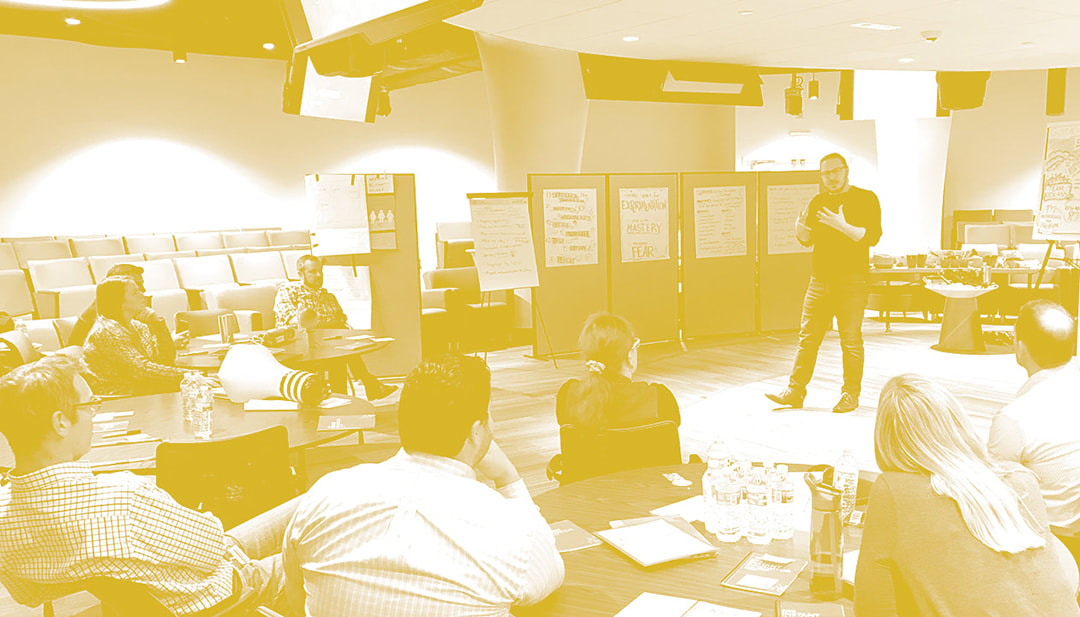|
In complex business environments, leadership cannot be off-boarded or outsourced. As leaders and executives, sometimes we blame the bad things happening around us on others, or the market, or circumstance.
Things like ineffective meetings, staff turnover, teams not hitting their goals, people holding back, lack of work/life balance, and not sticking to the strategy. These have nothing to do with other people and everything to do with the way you show up as a leader. It’s been said that “people don’t leave bad jobs, they leave bad managers.” The opposite is also true. People don’t follow ideas, they follow other people. Is your mission confusing and convoluted? Are there too many initiatives to remember? Have you made your vision of the future (and their role in it) crystal clear for the team? If not, chances are they will burn out. If they stop believing in your capacity to lead, you will no longer be their leader. No amount of bonuses or self-care days will undo it. Executives and leaders experiencing complexity and overwhelm can do two things to establish leadership in complex environments:
This alignment will look more like group storytelling than strategy. It will involve all of your people and involve them in visualizing things like retrospectives, journey maps, and cones of plausibility. Consider how the diversity of voices, perspectives and competencies you convene and empower today will impact, amplify, drive, or disrupt your work in the future. Visionary leaders prepare for this long tail and are able to manage the business along multiple horizons. The emotional benefits for leaders who can do this include:
Some measurable results we have seen in leaders and businesses that can enable this kind of thinking and behavior in those around them include:
As mentioned in our book, Visionary Leadership, these types of leaders are able to do three things well:
Raise more visual leaders. Celebrate them. Watch them shine.
0 Comments
At Illustrious, we pride ourselves on a commitment to quality outcomes. We've been doing visual consulting and facilitation for nearly a decade and have seen first-hand the negative effects of a poorly-designed and executed meeting, session, or client engagement.
As external facilitators, here are the top four reasons our clients give for using our facilitation services rather than facilitating themselves: 1. Participation Our clients want to participate in the process. We’ve found that OKRs (Objectives and Key Results) in particular are difficult to facilitate if you want to also participate in the session. It’s not easy to consider your team’s interdependencies, listen to your fellow participants’ 90-day needs and goals, determine how it will affect your department, and come to a consensus on how to measure progress while also sorting and organizing stickies, summarizing and reflecting the group inputs, and keeping an eye on the clock. 2. Mastery Over time, our team has developed a mastery of visual collaboration tools like MURAL and facilitation methods, ranging from The Grove’s Strategic Visioning process to Liberating Structures and Strategyzer to StoryBrand. Our clients rely on us to know which tool to use to help them solve their complex problems. 3. Time Deciding on the theme for a session; coordinating everyone’s calendars; sourcing artwork, illustrations, and photography; coding and deploying the surveys for the pre-work; designing the MURAL (or setting up the room); writing up the agenda, facilitator guide, and other necessary copy; collecting all of the deliverables from the session (survey results, recordings, graphic records) – these things take time. Most of our clients have roles that impact their business directly and know that time spent designing and prepping the session will be time spent not leading their team or fulfilling their role. 4. Results Sometimes when a team chooses to facilitate themselves, they may neglect to ask challenging questions in order to protect their strategic plan (or someone’s job). Or they will design a session to reinforce a currently-held belief. This is called confirmation bias. Sometimes authority and esteem (see The Fundamentals below) hasn’t been established by the head of HR. Sometimes the VP of Sales has too many inside jokes or treats the women in the room differently than the men. Sometimes the Chief Innovation Officer talks too fast or over everyone’s head. Sometimes the CEO or President takes herself too seriously and elicits snickering when her back is turned. We are constantly told that people behave better and create the desired results when an external facilitator is leading the group. |
Details
ABOUT THE AuthorJoran Slane Oppelt is an international speaker, author and consultant with certifications in coaching, storytelling, design thinking and virtual facilitation. Archives
March 2024
Categories
All
|



 RSS Feed
RSS Feed